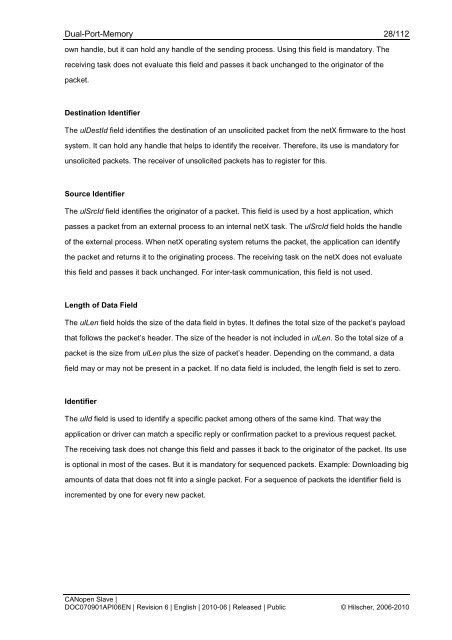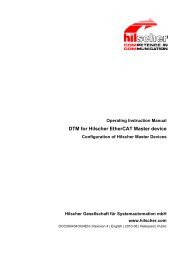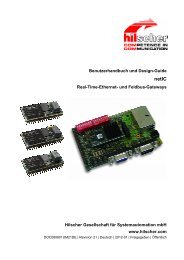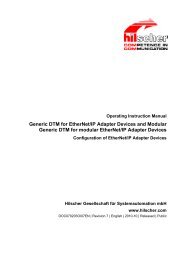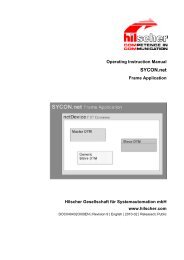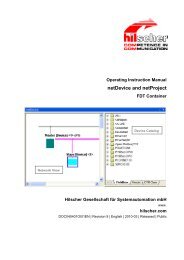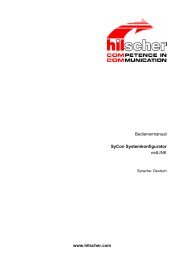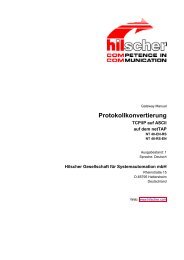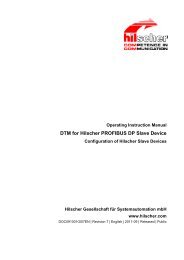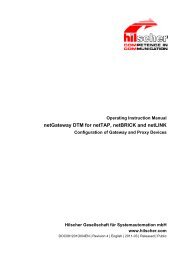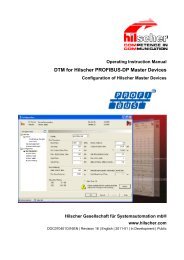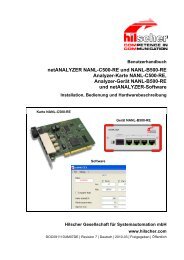CANopen Slave
CANopen Slave
CANopen Slave
Create successful ePaper yourself
Turn your PDF publications into a flip-book with our unique Google optimized e-Paper software.
Dual-Port-Memory 28/112<br />
own handle, but it can hold any handle of the sending process. Using this field is mandatory. The<br />
receiving task does not evaluate this field and passes it back unchanged to the originator of the<br />
packet.<br />
Destination Identifier<br />
The ulDestId field identifies the destination of an unsolicited packet from the netX firmware to the host<br />
system. It can hold any handle that helps to identify the receiver. Therefore, its use is mandatory for<br />
unsolicited packets. The receiver of unsolicited packets has to register for this.<br />
Source Identifier<br />
The ulSrcId field identifies the originator of a packet. This field is used by a host application, which<br />
passes a packet from an external process to an internal netX task. The ulSrcId field holds the handle<br />
of the external process. When netX operating system returns the packet, the application can identify<br />
the packet and returns it to the originating process. The receiving task on the netX does not evaluate<br />
this field and passes it back unchanged. For inter-task communication, this field is not used.<br />
Length of Data Field<br />
The ulLen field holds the size of the data field in bytes. It defines the total size of the packet’s payload<br />
that follows the packet’s header. The size of the header is not included in ulLen. So the total size of a<br />
packet is the size from ulLen plus the size of packet’s header. Depending on the command, a data<br />
field may or may not be present in a packet. If no data field is included, the length field is set to zero.<br />
Identifier<br />
The ulId field is used to identify a specific packet among others of the same kind. That way the<br />
application or driver can match a specific reply or confirmation packet to a previous request packet.<br />
The receiving task does not change this field and passes it back to the originator of the packet. Its use<br />
is optional in most of the cases. But it is mandatory for sequenced packets. Example: Downloading big<br />
amounts of data that does not fit into a single packet. For a sequence of packets the identifier field is<br />
incremented by one for every new packet.<br />
<strong>CANopen</strong> <strong>Slave</strong> |<br />
DOC070901API06EN | Revision 6 | English | 2010-06 | Released | Public © Hilscher, 2006-2010


